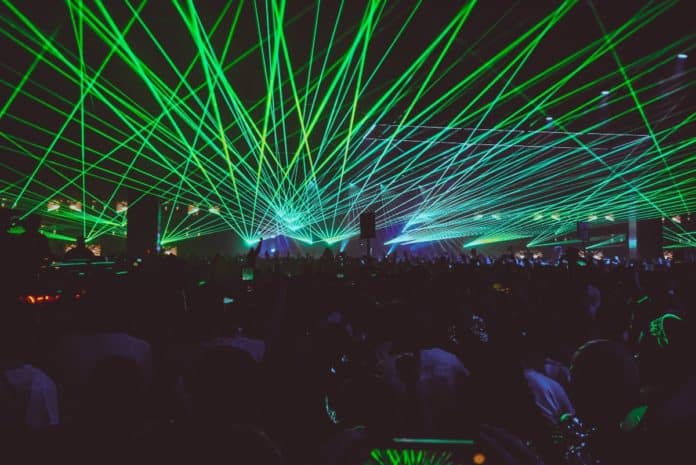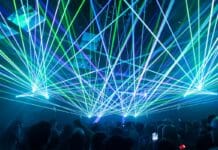
In recent years, the world is filled with secret student gatherings run by party crews and decentralized networks.
While nightclubs are facing tighter licensing demands and rules every day, the young population including students is seeking affordable and accessible fun.
The Story of Student Raves
Young people choose to rave these days and they have many reasons to do so. It all starts around 1989 where things just kept piling up. Beijing’s vast Tiananmen Square was crushed, the Berlin Wall fell, and statues of Communist leaders fell down. Some things were seen as cause for celebration, others for relief. Either way, young people decided to do all this through joyful rebellion.
This brought a heady combination of ecstasy and house music out into the countryside. The groups competed who will outwit authorities better. Ever since, raves became more and more spectacular – with huge sound systems, lasers, funfairs, and popular DJs and performers.
And the rave theme has become popular even among local newspapers and custom paper writing service.
At this point, raves gathered crowds of over 20,000 people. National networks joined in this hype and started selling tickets and music.
What did the police do?
They scoured the countryside looking for preparations of parties, set up roadblocks, tracked the radio stations, and even spread some disinformation around. They even tried containing such raves instead of stopping them altogether by granting licenses to local clubs.
The big party that changed everything about raves happened in 1992 in Worcestershire. An answering machine message got around and invited people to get out of their houses for the entire weekend. What was supposed to be a small gathering turned to the biggest illegal rave with 22.000 people at that point. This caused laws to change, but raves remained to exist.
New laws were put in place and new rules became the norm. Many things changed in all these years that have passed. But, illegal parties never went away. They simply went underground and remained without a specific, set geographical location.
At a point where technology and social media aids people in connecting, the word spreads around faster than ever. These raves become almost impossible to track, not to mention stop.
The raves become bigger, darker, and more massive. In the time of the coronavirus quarantine, there were plenty of secret, grand gatherings of thousands of people called ‘quarantine raves’ in the UK and other locations worldwide.
Many people judge these for different reasons, but it is hard to miss the need for it. Clubs were already backing down and failing to create quality entertainment. This just made it harder for young people to find some fun.
Civil Disobedience or Not?
This is a tough and highly controversial topic that’s constantly discussed by academics, researchers, sociologists, and of course – the law system. If you wish to write a paper or simply want to learn more about this, you can find some inspiration in the templates at https://eduzaurus.com/free-essay-samples/civil-disobedience/. These articles explore the reasons behind student raves, issues, and perks from the same. They are an ideal example of what college essays should look like.
Raves are glorified by some and seriously judged by others. The raves such as those in Manchester were and sounded really dangerous. There were stabbings and even death due to an overdose. Not to mention, the consequences of gathering so many people during an epidemic were terrible.
But, raves are not necessarily a bad thing – or a civil disobedience, for that matter. Back in 1989 when the climate crisis and Black Lives Matter movement gave young people a purpose, they were more than justified to party. When a rave lacks discipline, it can be disastrous.
Most raves today are very private and underground unlike past massive, outdoor gatherings. During the pandemic, there were even distanced raves with masks and sanitizers. It turns out that illegal events like raves are becoming professionally organized, far more consciously than before.
Even big artists notice the change. Goldie, a drum’n’bass producer, and an award-winning musician said that illegal parties are the key pillar of the dance music scene in struggling clubs. Bryan Gee, an established drum’n’bass DJ mixes up his attendances and entertains crowds in both licensed and unlicensed raves. He has crowds of over 7000 people and still, he claims to have turned up to unlicensed raves with bigger numbers.
The police keep their opinions intact. We constantly hear and read statements where raves are described as illegal and dangerous organizations that encourage antisocial behaviors. They are described as places where serious criminal activity happens.
Yes, it does. But not at all raves. There are raves where students and other young people go to have some fun, refuel and relax. Whether it is the thrill of doing something forbidden or the fact that raves are bigger than ever, no one can really find the exact reason. But, at a time when clubs are struggling to meet tough standards and comply with laws, raves are more flexible and accessible.
To be more, students are often on a low budget. These are the people who love to hear about a low-priced alternative to the costly legal clubs. In addition to being a place that you can visit on a budget, raves are organizations where students come together as one without intimidation and prejudice.
Article by Judy Nelson
Judy Nelson is a psychologist with over a decade of experience. She’s studied social psychology and is intrigued by the behaviors and opinions of different people. In addition to working in her private office, Judy holds online sessions and writes helpful articles on several blogs and journals.










Was this written by a bit?
I wanna kno where i can possibly find a rave in mass they got nada here…